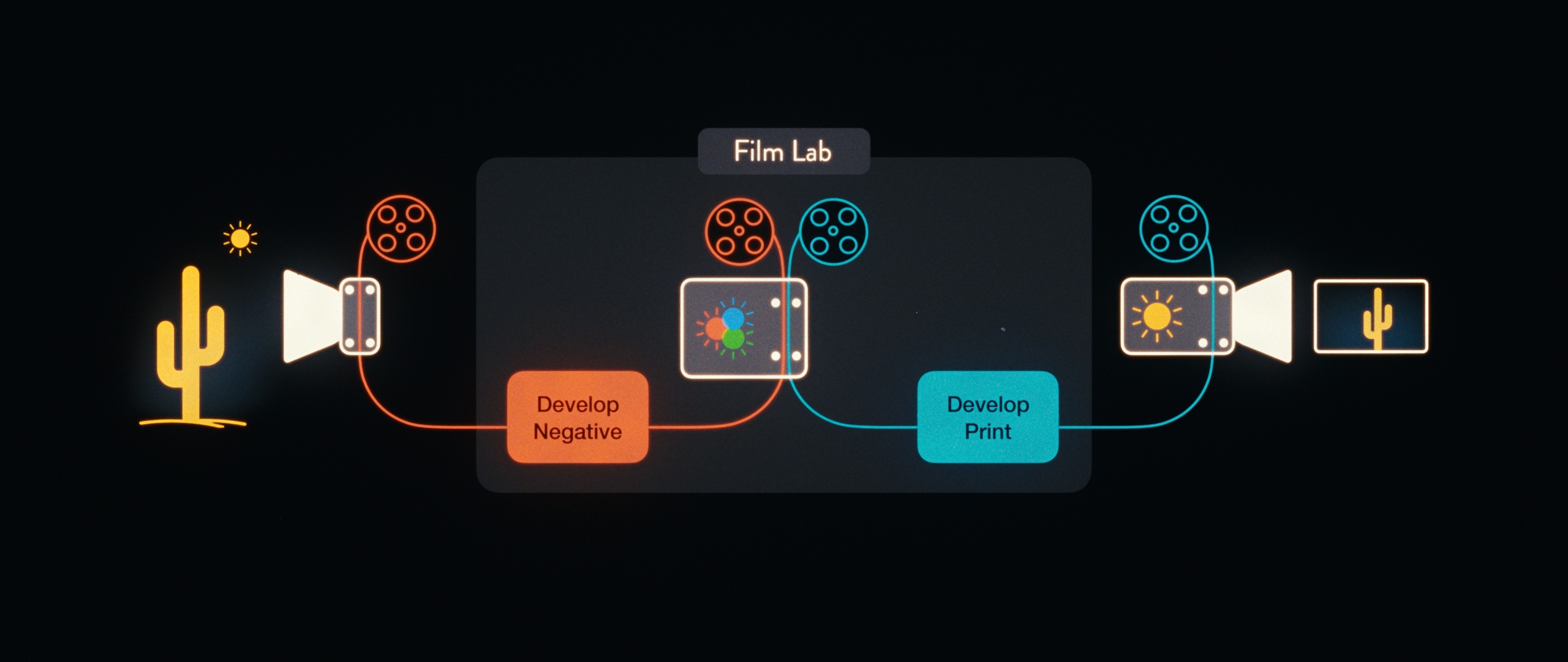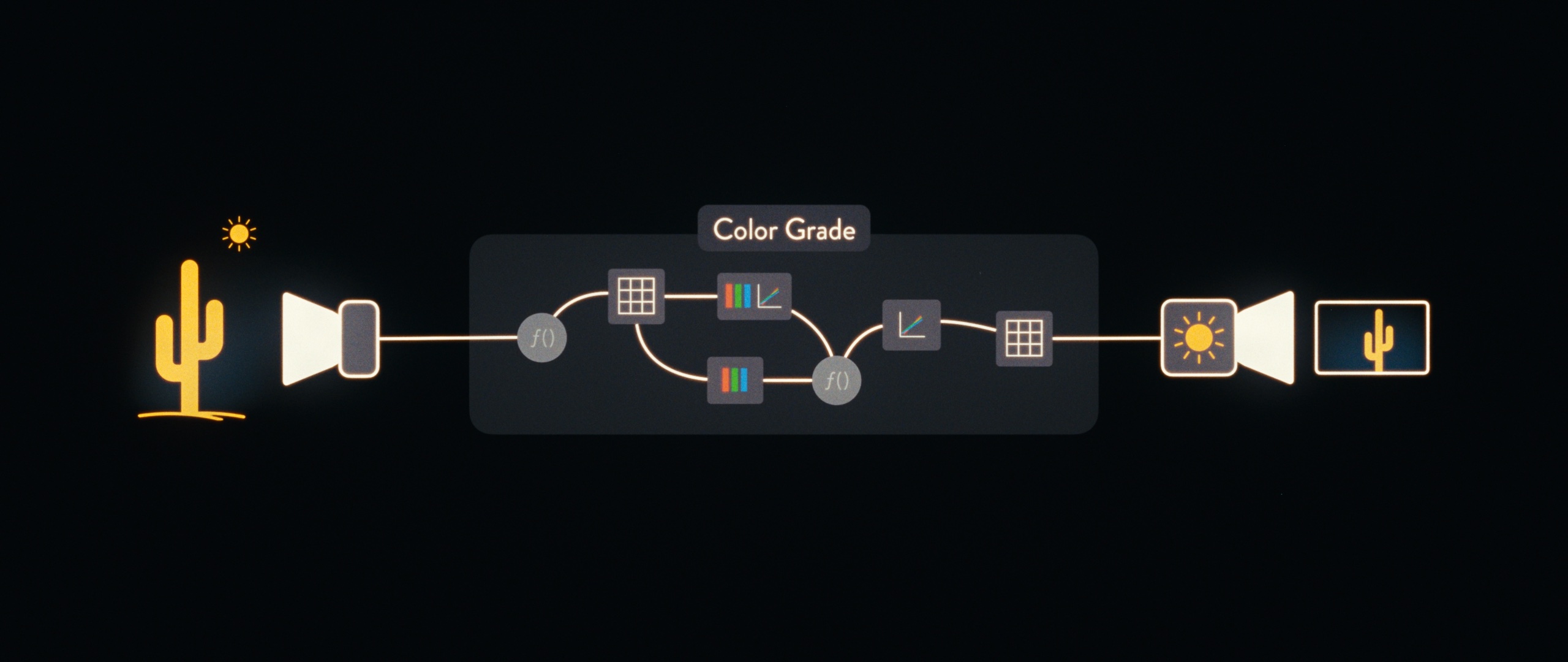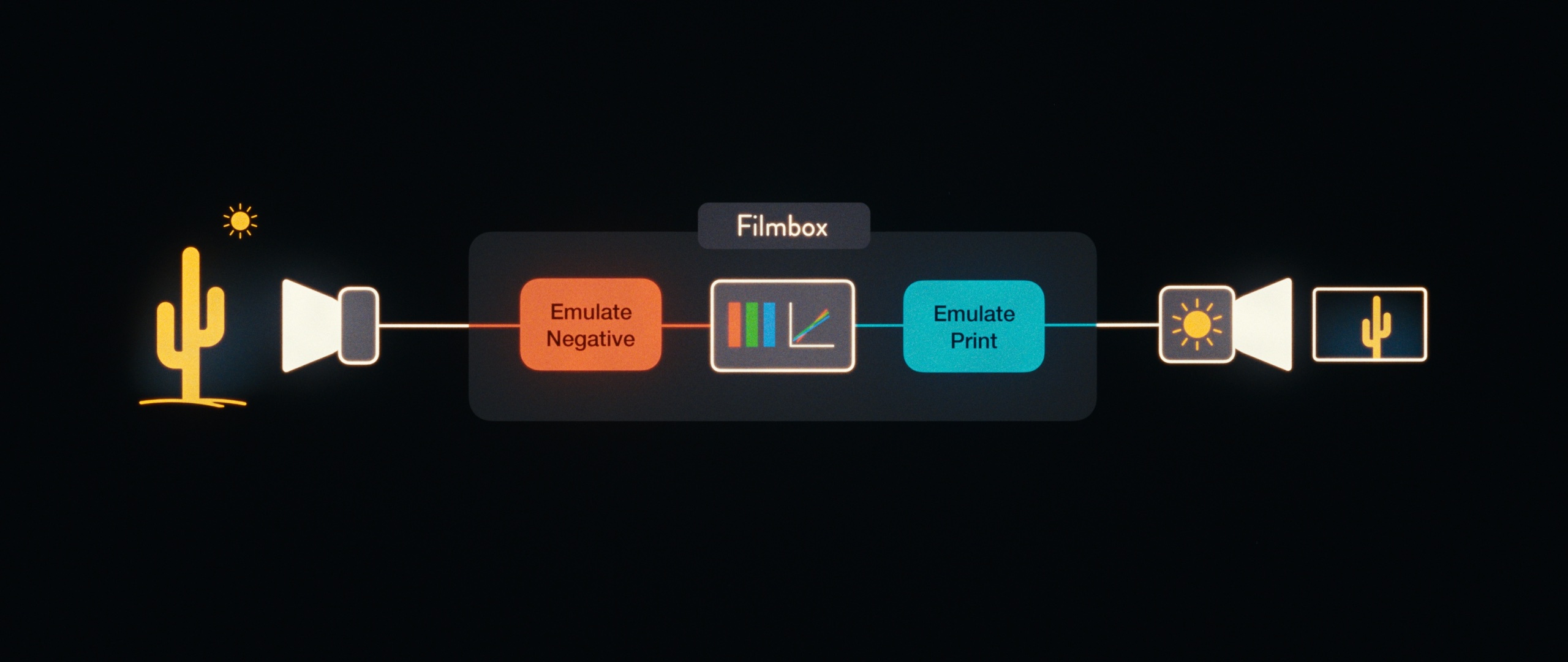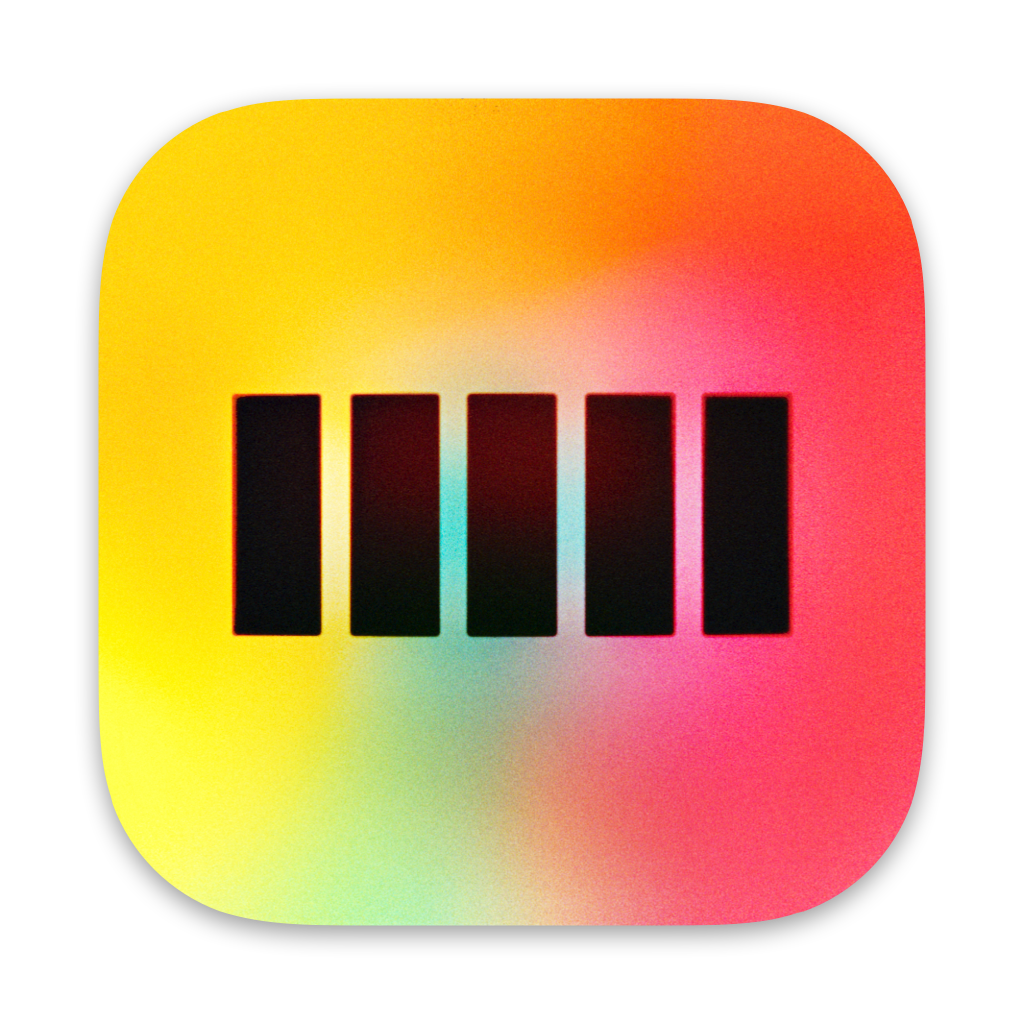Filmbox as a Format
Photochemical imaging is an end-to-end system that defines a "look," whereas the characteristics of digital imaging are open to interpretation.
This difference can influence how filmmakers approach cinematography. Filmbox is intended to emulate film, not just in appearance, but also in its working philosophy.
Photochemical Imaging

Film is not just an image acquisition technology; it's a complete imaging system that records and displays the image. This is easy to forget now that film negatives are typically scanned, graded, and displayed digitally.
The Kodak Vision 3 system has a "look" that is defined by the system itself, which has been honed over decades. There is a complex, yet deterministic, relationship between how something looks on the set and how the system renders it on the screen.
Changing the response of the system is limited to simple photographic parameters like choosing a negative stock, push/pull processing, and modulating the light source that prints the negative to the positive.
Digital Imaging

Digital imaging involves a digital camera and a digital display, but the image processing that connects them must be implemented by the filmmaker. A digital cinema camera on its own doesn't really have an inherent "look." It stores image data as a record of the light in the scene, not as a blueprint for how a particular display should reproduce that light.
Some creative choice must be made about how that photometric data should be transformed and rendered on a display.
This processing might involve the camera manufacturer's video LUT, or it might be defined by any number of complex operations in the color grading process and could change between scenes or even pixels.
The undefined nature of digital imaging brings enormous freedom, but the parameters that define its characteristics are countless and may not be well understood or explicitly controlled by the people doing the actual photography (e.g., the DP, director, gaffer, etc.).
These characteristics may not even be defined until after the footage is shot. In this case, the colorist must modulate the characteristics of the imaging system in response to the way the image data was acquired, instead of the other way around.
Part of the allure of photochemical imaging, beyond the beauty of its characteristics, is that those characteristics are deterministic and carefully selected before photography. This enables photographic decisions to be made on set that push and pull against those characteristics to craft specific and intentional images.
Filmbox

Filmbox is designed to bridge cinema cameras and digital displays into an imaging system that functions as a "format" with defined characteristics and simple parameters for modulating those characteristics, similar to photochemical imaging. We want to encourage DPs and directors to work with Filmbox as an extension of the camera, as opposed to a generic post effect.
Do camera tests with it, get to know the way it responds to light, and the parameters that modulate its characteristics. Monitor with it on set, burn it into dailies, and explicitly tune its properties in the grading process.
Regardless of how you want to work, we think you will find that Filmbox faithfully embodies the subtle and complex spatial, temporal, and photometric characteristics of photochemical imaging, which have been difficult to achieve in this digital age.
/ Filmbox Lite is free, and so is DaVinci Resolve, so you can start using it right now!


 Made in California
Made in California